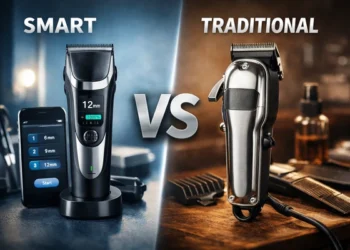Here’s the hard truth: choosing the wrong verification tool can quietly drain your budget and damage your brand in ways you might not notice right away. Failed deliveries, fake sign-ups, and compliance headaches don’t just waste money; they slowly erode customer trust and create unnecessary chaos for your team.
The right email verification tools do far more than clean your lists. They protect your sender reputation, reduce fraud, secure your data, and keep your campaigns running smoothly. Reliable systems catch issues before they spiral out of control, saving you from lost revenue and sleepless nights.
In this guide, we’ll dig into what truly separates dependable verification tools from the rest, how to identify warning signs early, and how to choose a solution that fits your growth goals. Because in today’s market, accuracy isn’t optional , it’s the foundation of trust, deliverability, and lasting success.
What Makes Verification Tools Accurate?
Think about the accuracy of verification software like this: it’s your tireless quality control guard that never takes a coffee break. Everything rides on how data gets handled at entry and what the system does next.
Core Performance Metrics:
True positives versus false positives: that’s where the story really starts. Want a wake-up call? Bad data drains more than $3.1 trillion from the U.S. economy every year (Contact Center Pipeline). To put that in perspective, imagine just erasing Apple. Gone. That’s the scale we’re dealing with here, which is exactly why verification tools’ accuracy matters way more than vendors want you to know.
Modern validation tools pull off something pretty remarkable, they cross-reference multiple data points at once. Format checks? Done. Database comparisons against trusted sources? Handled. Spotting inconsistencies before they snowball? Absolutely. Now here’s where it gets interesting: that gap between 95% and 99% accuracy? It might look tiny on paper. But scale that up, and suddenly you’re staring at thousands of blown transactions or fraud attempts you completely missed.
Testing Standards:
Marketing promises versus actual performance, independent testing is what separates them. You want tools that’ve been through third-party audits with results you can actually read. Some vendors look absolutely perfect in controlled lab conditions, then reality hits, and things fall apart fast. That’s why ongoing monitoring crushes one-time certifications every single time.
Reliability Factors That Matter Most
Let’s be real: accuracy means absolutely nothing when your verification system decides to crash during your busiest hours. Reliable verification tools walk this tightrope between precision and rock-solid availability.
Uptime and Consistency:
SLA promises bounce all over the place. You’ll see 99.9% uptime guarantees next to 99.99% commitments, seems close, right? Wrong. That decimal difference translates to roughly 8 hours of downtime yearly versus 50 minutes. Your business operations can’t just freeze while verification systems take a nap for maintenance, which makes redundancy and failover capabilities essential, not optional extras.
Geography plays a bigger role than you’d think too. Route your verification requests through one lonely data center on the opposite coast and watch latency pile up. Multi-region deployments keep everything flowing smoothly without hiccups.
Data Source Quality:
Where do verification tools grab their data? That’s make-or-break territory for long-term accuracy. Real-time updates from primary sources beat monthly refreshes from secondary databases every day of the week. Take email verification as an example, emails authenticated with SPF records see a 99% higher chance of actually landing in recipient inboxes compared to unauthenticated ones (AutoSPF). That’s not marginal. That’s massive.
Multi-source verification adds this beautiful layer of confidence. When you’re cross-checking three databases instead of trusting just one, you catch inconsistencies that single-source systems miss completely.
Technology Differences Drive Results
The tech stack underneath explains why certain tools consistently outperform their competition. These details aren’t just technical mumbo-jumbo, they’re the actual reasons behind verification tool comparison outcomes you see.
AI and Machine Learning:
Modern verification uses neural networks that spot patterns invisible to human eyes. They evolve alongside emerging fraud techniques without someone manually updating rules. Self-learning systems turn today’s false positives into tomorrow’s accurate catches. But here’s the rub: AI is only as good as its training data. Feed it garbage and it’ll amplify biases instead of eliminating them.
Deepfake detection sits at the frontier right now. As synthetic media becomes increasingly convincing, verification tools powered by advanced AI maintain accuracy while traditional methods stumble and fall behind.
Real-Time vs. Batch Processing:
Real-time verification creates friction but catches problems instantly. Batch processing moves faster yet delays problem detection. The best verification tools actually let you pick based on what you need, instant verification for high-stakes transactions, batch mode for cleaning up bulk data.
How do tools perform under heavy load? That reveals reliability gaps fast. Systems handling 100 transactions per second beautifully might completely choke at 10,000. Stress testing data shows you which platforms scale up without sacrificing accuracy.
Industry-Specific Requirements
Different industries demand wildly different accuracy thresholds. E-commerce solutions might completely bomb healthcare compliance audits.
Financial Services Needs:
KYC and AML regulations forgive exactly nothing. Financial institutions require verification tools hitting 99%+ accuracy on identity checks, complete with audit trails documenting every single decision. Government database integration needs to happen in real-time, not hours or days later. Document authenticity detection can’t miss sophisticated forgeries, the regulatory penalties are brutal.
E-commerce Applications:
Address verification stops billions in failed deliveries annually. The accuracy requirements differ significantly from financial services, though. A 96% match rate might work perfectly fine for physical shipments, while digital products demand tighter controls. Payment verification walks this tricky line between fraud prevention and checkout friction, too aggressive and legitimate sales vanish, too lenient and chargebacks multiply like rabbits.
Making Verification Work for You
The distance between verification tools’ accuracy and genuine reliability boils down to technology decisions, data source quality, and how vendors tackle edge cases. Perfect accuracy is a myth. Understanding these differences helps you select tools that match your actual requirements. Remember this: the cheapest option almost always costs more long-term through blown transactions and compliance headaches.
Test verification tools using your environment, not vendor demos. Run proof-of-concept trials with your actual data to see whether accuracy holds up under real conditions. That’s your path to finding genuinely reliable verification tools delivering consistent results exactly when you need them most.
Read Also: The Power of Modern Security Systems
Your Verification Questions Answered
1. What accuracy rate should I realistically expect from professional verification tools?
Industry benchmarks sit between 95-99.5% depending on what you’re verifying. Identity verification reaches the high end, while address verification typically lands around 92-98%. Any vendor promising perfect accuracy? They’re lying. It simply doesn’t exist under real-world conditions.
2. How do free verification tools compare to paid solutions?
Free tools usually rely on outdated databases without real-time updates. You’ll see accuracy differences of 10-20% compared to paid options. The real cost shows up later, failed deliveries, fraud losses, staff hours wasted cleaning up bad data.
3. What causes verification tools to produce false positives?
Configuration issues top the list, followed by stale databases and rule sets cranked up too aggressively. Sometimes the data itself creates ambiguity, middle initials, apartment numbers, international addresses all generate legitimate confusion that even quality tools wrestle with.











